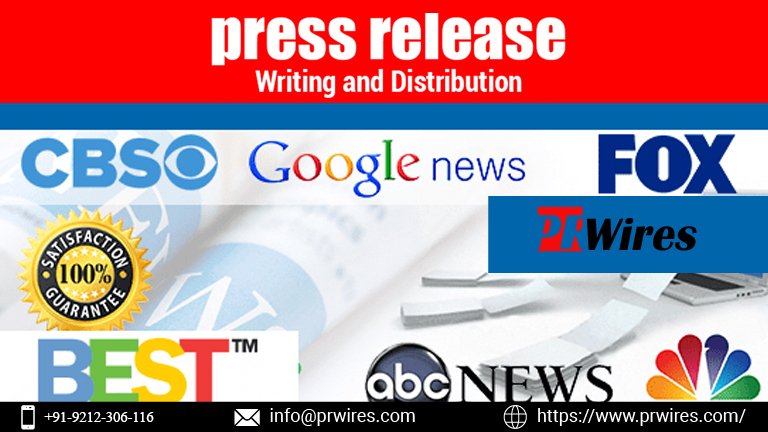What are some ways to use data and analytics in copywriting to improve the effectiveness of a campaign?
By leveraging insights into audience preferences, optimizing through A/B testing, personalizing messaging, analyzing competitors, tracking engagement metrics, and utilizing predictive analytics, you can create copy that drives engagement, conversions, and overall success

In today’s digital landscape, data and analytics have become indispensable tools for copywriters striving to maximize the impact of their campaigns. The ability to harness data-driven insights can significantly enhance the effectiveness of your copywriting efforts, driving engagement, conversions, and overall campaign success. This comprehensive guide explores various strategies for using data and analytics to optimize copywriting, ensuring that your content resonates with your target audience and achieves your marketing objectives.
Understanding Your Audience through Data
The foundation of any successful copywriting campaign is a deep understanding of the target audience. Data and analytics provide invaluable insights into audience demographics, behaviors, preferences, and pain points. By analyzing data from various sources such as social media platforms, website analytics, and customer feedback, you can create detailed audience profiles. This enables you to tailor your copy to address the specific needs and interests of your audience, making your messaging more relevant and compelling.
For instance, if your analytics reveal that your audience predominantly consists of young professionals interested in technology, you can craft copy that highlights cutting-edge features and benefits. Conversely, if your data shows a preference for eco-friendly products, your copy should emphasize sustainability and environmental impact. By aligning your copy with audience preferences, you increase the likelihood of capturing their attention and driving engagement.
Optimizing Copy with A/B Testing
A/B testing is a powerful method for optimizing copy by comparing two or more variations to determine which performs better. This data-driven approach allows you to experiment with different headlines, calls-to-action (CTAs), and content structures to identify the most effective elements for your audience.
To conduct A/B testing, create multiple versions of your copy with slight variations and test them against each other. For example, you might test two different headlines to see which one generates more clicks or conversions. By analyzing the results, you can identify which version resonates better with your audience and make data-informed decisions to refine your copy.
Leveraging Conversion Rate Optimization (CRO) Insights
Conversion Rate Optimization (CRO) focuses on improving the percentage of visitors who complete a desired action, such as making a purchase or signing up for a newsletter. Data and analytics play a crucial role in CRO by providing insights into user behavior, conversion paths, and potential bottlenecks in the conversion process.
Using tools like Google Analytics, you can track key metrics such as bounce rates, exit rates, and conversion funnels. Analyzing this data helps you understand where users are dropping off and which elements of your copy may need improvement. For example, if you notice a high bounce rate on a landing page, it may indicate that your copy isn’t engaging enough or that the CTA is unclear. By addressing these issues, you can enhance your copy to better guide users through the conversion process.
Personalizing Copy Based on User Segmentation
Personalization is a key driver of engagement and conversion. Data and analytics enable you to segment your audience based on various criteria, such as demographics, behavior, and purchase history. By creating targeted messaging for different segments, you can deliver more relevant and personalized copy.
For instance, if you have data indicating that a segment of your audience frequently purchases high-end products, you can tailor your copy to emphasize luxury features and exclusivity. On the other hand, if another segment is price-sensitive, focus on value and affordability. Personalizing your copy based on user segmentation enhances the relevance of your messaging and increases the likelihood of resonating with your audience.
Analyzing Competitor Performance
Competitor analysis is another valuable application of data and analytics in copywriting. By examining the performance of your competitors’ content, you can gain insights into what works well in your industry and identify areas for improvement in your own copy.
Tools like SEMrush, Ahrefs, and BuzzSumo can help you analyze competitors’ top-performing content, keywords, and engagement metrics. By studying their strategies, you can uncover successful tactics and adapt them to your own campaigns. Additionally, identifying gaps in your competitors’ content provides opportunities to differentiate your messaging and offer unique value to your audience.
Tracking and Analyzing Engagement Metrics
Engagement metrics, such as click-through rates (CTR), time on page, and social shares, provide valuable feedback on the effectiveness of your copy. By monitoring these metrics, you can gauge how well your content resonates with your audience and make data-driven adjustments.
For example, if you notice a low CTR on your email campaigns, it may indicate that your subject lines or CTAs need improvement. Similarly, if users are spending very little time on your landing page, it could suggest that your copy isn’t capturing their interest. Regularly tracking and analyzing engagement metrics allows you to refine your copy based on real-time performance data, leading to more effective campaigns.
Using Predictive Analytics to Anticipate Trends
Predictive analytics involves using historical data and statistical algorithms to forecast future trends and behaviors. In copywriting, predictive analytics can help you anticipate shifts in audience preferences, market trends, and emerging topics of interest.
By leveraging predictive analytics tools, you can identify potential trends and tailor your copy accordingly. For example, if data suggests a growing interest in a particular topic or product category, you can create content that aligns with these trends, positioning your brand as a thought leader and capturing early interest from your audience.
Enhancing SEO through Data-Driven Insights
Search Engine Optimization (SEO) is a critical aspect of copywriting, and data plays a vital role in optimizing your content for search engines. By analyzing keyword performance, search volume, and user intent, you can create copy that ranks higher in search engine results and attracts more organic traffic.
Tools like Google Keyword Planner and Moz can provide insights into high-performing keywords and phrases relevant to your industry. By incorporating these keywords into your copy strategically, you can improve your content’s visibility and relevance to search engines. Additionally, analyzing user behavior data can help you understand how users interact with search results and refine your copy to better meet their needs.
Implementing Feedback Loops for Continuous Improvement
Feedback loops involve collecting and analyzing data from various sources to continually refine and improve your copywriting efforts. By establishing feedback mechanisms, such as customer surveys, social media monitoring, and performance analytics, you can gather valuable insights and make data-driven adjustments to your campaigns.
For example, if customers provide feedback indicating that they find your product descriptions lacking in detail, you can use this input to enhance your copy and provide more comprehensive information. Similarly, monitoring social media conversations can help you identify common questions or concerns that can be addressed in your copy to better resonate with your audience.
Incorporating data and analytics into your copywriting strategy is essential for maximizing campaign effectiveness. By leveraging insights into audience preferences, optimizing through A/B testing, personalizing messaging, analyzing competitors, tracking engagement metrics, and utilizing predictive analytics, you can create copy that drives engagement, conversions, and overall success. Embracing a data-driven approach ensures that your copy is not only compelling but also strategically aligned with your audience’s needs and preferences, ultimately leading to more impactful and successful campaigns.
FAQs on Leveraging Data and Analytics in Copywriting
1. How can data and analytics improve my copywriting efforts?
Data and analytics provide insights into your audience's demographics, behaviors, and preferences, allowing you to tailor your copy to better meet their needs. By analyzing metrics such as engagement rates, conversion paths, and audience feedback, you can optimize your messaging, test different copy variations, and make data-driven adjustments to enhance your campaign's effectiveness.
2. What types of data are useful for improving copywriting?
Useful data types include audience demographics, website analytics, social media engagement metrics, conversion rates, A/B testing results, and customer feedback. This data helps you understand your audience, test different copy elements, track performance, and refine your messaging to better align with audience interests and behavior.
3. What is A/B testing and how does it help in copywriting?
A/B testing involves creating and comparing multiple versions of your copy to determine which performs better. By testing variations in headlines, calls-to-action (CTAs), and content structure, you can identify the most effective elements for your audience. This data-driven approach helps you refine your copy to increase engagement and conversions.
4. How can Conversion Rate Optimization (CRO) insights improve my copy?
CRO insights help you understand user behavior and identify areas where users drop off in the conversion process. By analyzing metrics such as bounce rates and exit rates, you can identify issues with your copy and make adjustments to improve the user experience, ultimately leading to higher conversion rates.
5. How can I use data to personalize my copy?
Data allows you to segment your audience based on criteria like demographics, behavior, and purchase history. By tailoring your copy to address the specific needs and preferences of different segments, you can create more relevant and personalized messaging that resonates with your audience and drives engagement.
6. What is competitor analysis and how can it benefit my copywriting?
Competitor analysis involves examining the performance of your competitors’ content to identify successful strategies and areas for improvement. By analyzing their top-performing content, keywords, and engagement metrics, you can gain insights into industry trends, discover effective tactics, and differentiate your messaging to offer unique value to your audience.
7. What engagement metrics should I track to assess my copy’s effectiveness?
Key engagement metrics include click-through rates (CTR), time on page, social shares, and conversion rates. Monitoring these metrics helps you gauge how well your copy resonates with your audience, identify areas for improvement, and make data-driven adjustments to enhance your content’s performance.
8. How can predictive analytics be used in copywriting?
Predictive analytics uses historical data and statistical algorithms to forecast future trends and behaviors. In copywriting, it can help you anticipate shifts in audience preferences, market trends, and emerging topics. By aligning your copy with these trends, you can position your brand as a thought leader and capture early interest from your audience.
9. How can I improve my SEO using data-driven insights?
Data-driven insights can help you identify high-performing keywords, understand search volume, and optimize your content for search engines. Tools like Google Keyword Planner and Moz provide valuable data on relevant keywords and phrases, allowing you to incorporate them strategically into your copy to improve visibility and attract organic traffic.
10. What are feedback loops and how do they contribute to better copywriting?
Feedback loops involve collecting and analyzing data from various sources, such as customer surveys, social media, and performance metrics, to continually refine your copy. By incorporating feedback and making data-driven adjustments, you can enhance your messaging, address common concerns, and improve the overall effectiveness of your copywriting efforts.
Get in Touch
Website – www.webinfomatrix.com
Mobile - +91 9212306116
Whatsapp – https://call.whatsapp.com/voice/9rqVJyqSNMhpdFkKPZGYKj
Skype – shalabh.mishra
Telegram – shalabhmishra
Email - info@webinfomatrix.com
What's Your Reaction?










.jpg)











